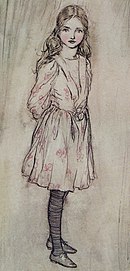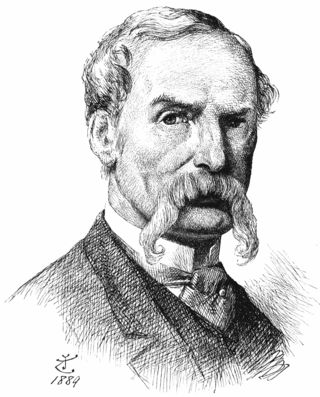
Sir John Tenniel was an English illustrator, graphic humourist and political cartoonist prominent in the second half of the 19th century. An alumnus of the Royal Academy of Arts in London, he was knighted for artistic achievements in 1893, the first such honour ever bestowed on an illustrator or cartoonist.

"Jabberwocky" is a nonsense poem written by Lewis Carroll about the killing of a creature named "the Jabberwock". It was included in his 1871 novel Through the Looking-Glass, the sequel to Alice's Adventures in Wonderland (1865). The book tells of Alice's adventures within the back-to-front world of the Looking-Glass world.

The Annotated Alice is a 1960 book by Martin Gardner incorporating the text of Lewis Carroll's major tales, Alice's Adventures in Wonderland (1865) and Through the Looking-Glass (1871), as well as the original illustrations by John Tenniel. It has extensive annotations explaining the contemporary references, mathematical concepts, word play, and Victorian traditions featured in the two books.

Alice's Adventures in Wonderland is an 1865 English children's novel by Lewis Carroll, a mathematics don at Oxford University. It details the story of a young girl named Alice who falls through a rabbit hole into a fantasy world of anthropomorphic creatures. It is seen as an example of the literary nonsense genre. The artist John Tenniel provided 42 wood-engraved illustrations for the book.
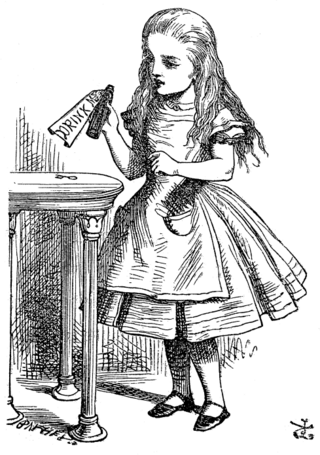
Alice is a fictional character and the main protagonist of Lewis Carroll's children's novel Alice's Adventures in Wonderland (1865) and its sequel, Through the Looking-Glass (1871). A child in the mid-Victorian era, Alice unintentionally goes on an underground adventure after falling down a rabbit hole into Wonderland; in the sequel, she steps through a mirror into an alternative world.
Barry Moser is an American visual artist and educator, known as a printmaker specializing in wood engravings, and an illustrator of numerous works of literature. He is also the owner and operator of the Pennyroyal Press, an engraving and small book publisher founded in 1970.

The Nursery "Alice" (1889/90) is an abridged version of Alice's Adventures in Wonderland (1865) by Lewis Carroll, adapted by the author himself for children "from nought to five". It includes 20 of John Tenniel's illustrations from the original book, redrawn, enlarged, coloured – and, in some cases, revised – by Tenniel himself. The book was published by Macmillan a quarter-century after the original Alice. It featured new illustrated front and back covers in full colour by E. Gertrude Thomson, who was a good friend of Dodgson. The book was 'engraved and printed' by the famous colour printer Edmund Evans.

Lewis Carroll's books Alice's Adventures in Wonderland (1865) and Through the Looking-Glass (1871) have been highly popular in their original forms, and have served as the basis for many subsequent works since they were published. They have been adapted directly into other media, their characters and situations have been appropriated into other works, and these elements have been referenced innumerable times as familiar elements of shared culture. Simple references to the two books are too numerous to list; this list of works based on Alice in Wonderland focuses on works based specifically and substantially on Carroll's two books about the character of Alice.

A New Alice in the Old Wonderland is a fantasy novel written by Anna M. Richards, illustrated by Anna M. Richards Jr., and published in 1895 by J. B. Lippincott of Philadelphia. According to Carolyn Sigler, it is one of the more important "Alice imitations", or novels inspired by Lewis Carroll's Alice books.
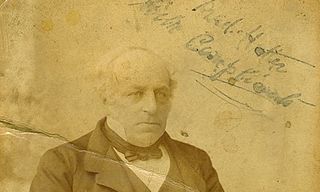
Theophilus Carter was an eccentric British furniture dealer who may have been an inspiration for the illustration by Sir John Tenniel of Lewis Carroll's characters the Mad Hatter in his 1865 novel Alice's Adventures in Wonderland and Hatta in the 1871 sequel Through the Looking-Glass.

Alice from Alice's Adventures in Wonderland is one of the most iconic figures to emerge from 19th century children's literature, and one who is instantly recognized by her attire. Although many artists have depicted Alice in many different ways, the original illustrations by John Tenniel have become iconic through their subsequent repetition in most published editions and film adaptations.

John Vernon Lord is an illustrator, author and teacher. He is widely recognized for his illustrations of various texts such as Aesop's Fables,The Nonsense Verse of Edward Lear; the Folio Society's Myths and Legends of the British Isles. He has also illustrated classics of English literature, including the works of Lewis Carroll and James Joyce. Lord has written and illustrated several children's books, which have been published and translated into multiple languages. His book The Giant Jam Sandwich has been in print since 1972
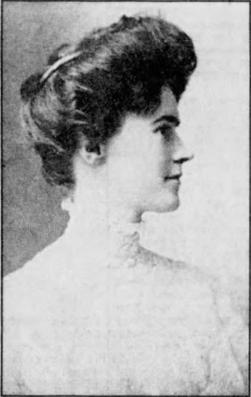
Bessie Pease Gutmann was an American artist and illustrator, most noted for her paintings of putti, infants, and young children. During the early 1900s she was one of the better-known magazine and book illustrators in the United States. Her artwork was featured on 22 magazine covers such as Woman's Home Companion and McCall's between 1906 and 1920. She also illustrated popular children's books including a notable 1907 edition of Alice's Adventures in Wonderland. Although the commercial popularity of Gutmann's art declined during World War II, there was renewed interest in her illustrations from collectors by the late 20th century.
"You Are Old, Father William" is a poem by Lewis Carroll that appears in his 1865 book Alice's Adventures in Wonderland. It is recited by Alice in Chapter 5, "Advice from a Caterpillar". Alice informs the Caterpillar that she has previously tried to repeat "How Doth the Little Busy Bee" and has had it all come wrong as "How Doth the Little Crocodile". The Caterpillar asks her to repeat "You Are Old, Father William", and she recites it.

Clara in Blunderland is a novel by Caroline Lewis, written in 1902 and published by William Heinemann of London. It is a political parody of Lewis Carroll's two books, Alice's Adventures in Wonderland (1865) and Through the Looking-Glass (1871). The book was followed a year later by a sequel, Lost in Blunderland.
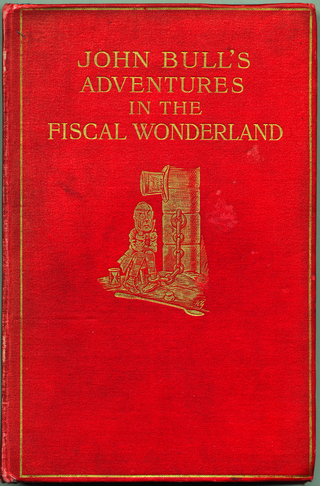
John Bull's Adventures in the Fiscal Wonderland is a novel by Charles Geake and Francis Carruthers Gould, written in 1904 and published by Methuen & Co. of London. It is a political parody of Lewis Carroll's two books, Alice's Adventures in Wonderland (1865) and Through the Looking-Glass (1871).

Alice in Blunderland: An Iridescent Dream is a novel by John Kendrick Bangs. It was first published in 1907 by Doubleday, Page & Co. of New York, with illustrations by Albert Levering. It is a political parody of the two Alice books by Lewis Carroll, Alice's Adventures in Wonderland (1865) and Through the Looking-Glass (1871).

Amy Millicent Sowerby (1878–1967) was an English painter and illustrator, known for her illustrations of classic children's stories such as Alice's Adventures in Wonderland and A Child's Garden of Verses, her postcards featuring children, nursery rhymes, and Shakespeare scenes, and children's books created with her sister Githa Sowerby.

Mark Burstein is an author, book editor and expert on the works of Lewis Carroll. He is a lifelong Carrollian and has been a key figure in the Lewis Carroll Society of North America (LCSNA).
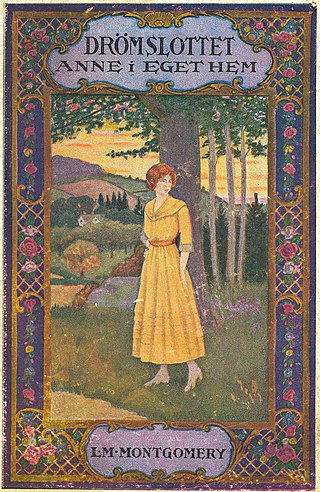
Maria Louise Kirk, usually credited as M. L. Kirk or Maria L. Kirk, was an American painter and illustrator of more than fifty books, most of them for children.




